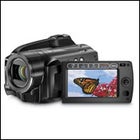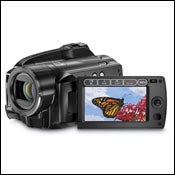There really arent cold weather” cameras out there. And there never have been. I mean, think about it, on a regular basis I run into Jim Whittaker, the first American up Everest in 1963. Pictures of that trip were taken with a plain ol 35mm camera. You can look way back to when Scott stood at the South Pole, beaten by Amundsen, and took that remarkable self-portrait of a group of defeated, doomed men. And it was, what, -30F?
Canon Vixia HG20 AVCHD 60G Camcorder
 Vixia HG20 AVCHD 60G Camcorder
Vixia HG20 AVCHD 60G CamcorderThat said, if you were going somewhere cold, it used to be that you took your Nikon F or your Hanimex Super 8 into the camera shop, where small, quiet men hunched over spotlighted workbenches covered in thousands of camera parts, and they would do some magic with polar bear grease or whatever and make your camera cold-adapted. But these days cameras have seemingly no moving parts; they are all solid state. So what to do?
Think this way: Forget the camera. Its all about the batteries. Cold makes the little electrons slow way ..down. And slow electrons dont give it up when you want to take a picture. So you need to do two things. One, pack spare batteries. Probably two in addition to the one in the camera. And two, keep the batteries that arent in your camera as close to your body as possible. Camera doesnt want to work? Its electrical. Its cold. Pull out a spare warm battery and you are good to go for two or three hours.
Not that you leave the camera entirely on its own. Keep it in a pocket or inside your zipper, too. Itll keep the battery inside warmer and prevent frost on the lens. So what camera? There are lots of good ones out there. If it was me, Id take a Vixia HG20 AVCHD 60G camcorder. Its compact, high-def, and about $600 or so street price. Youll be golden.
The is now online so you can get prepped for gift-giving seasoneven if everything you pick is for yourself!


